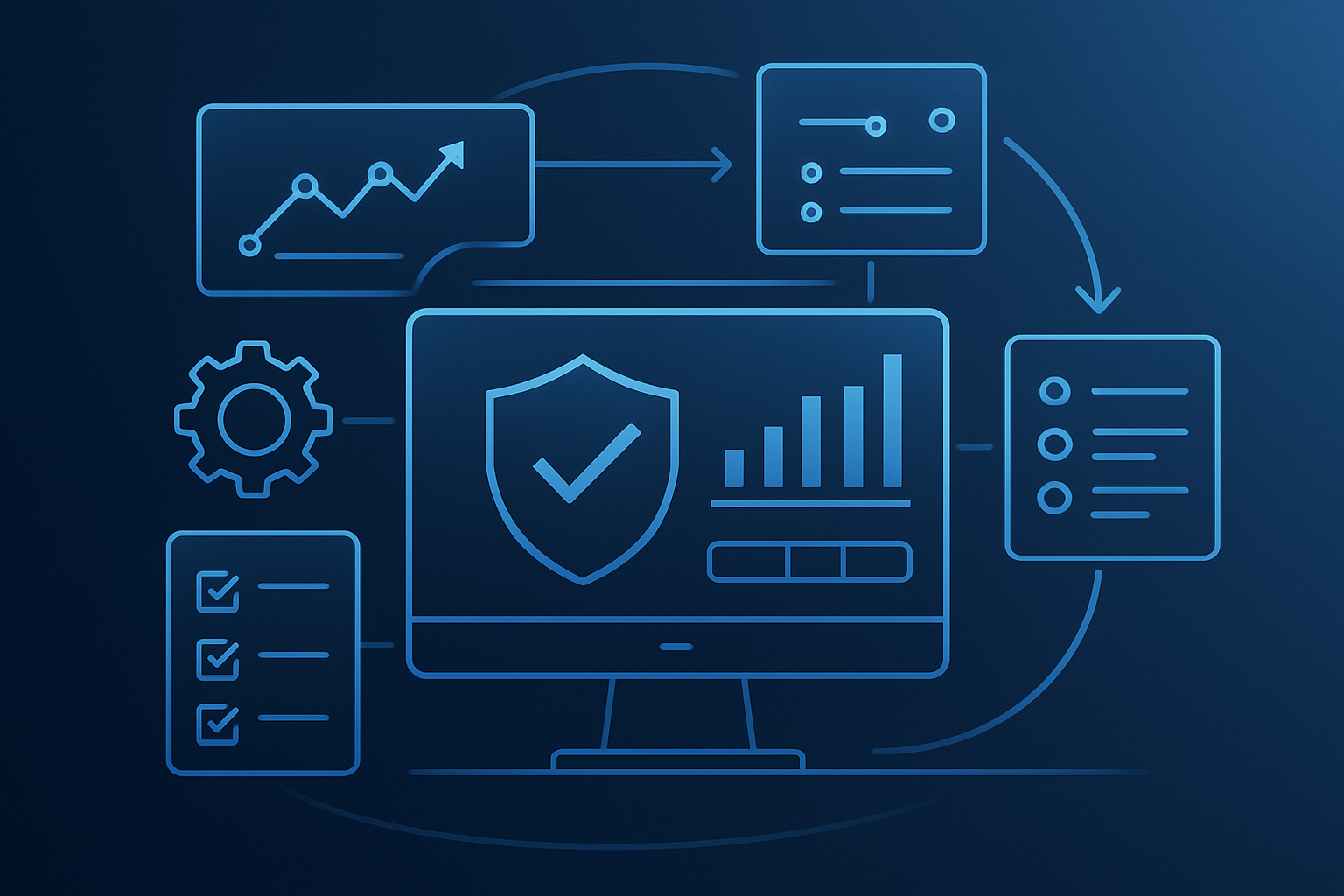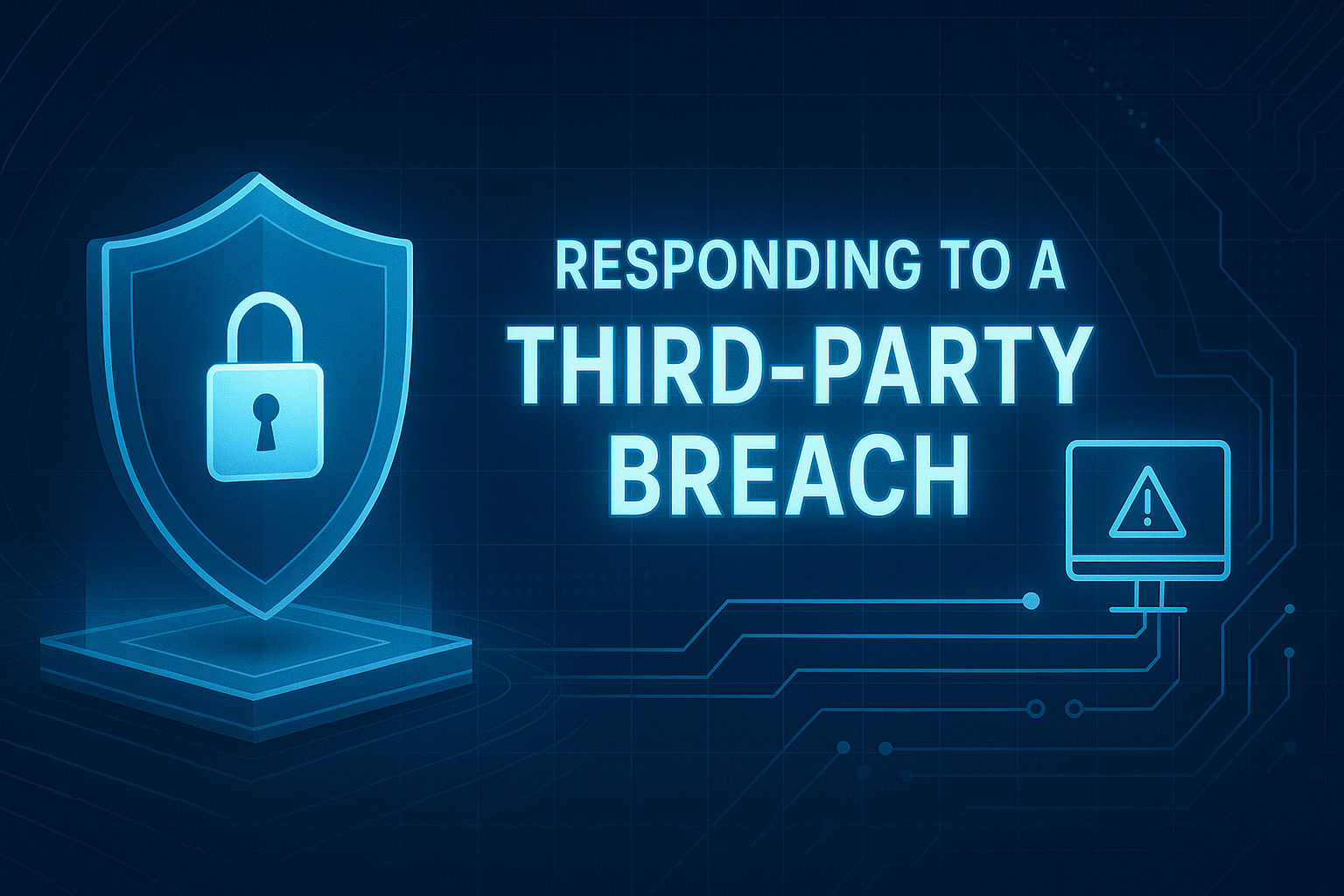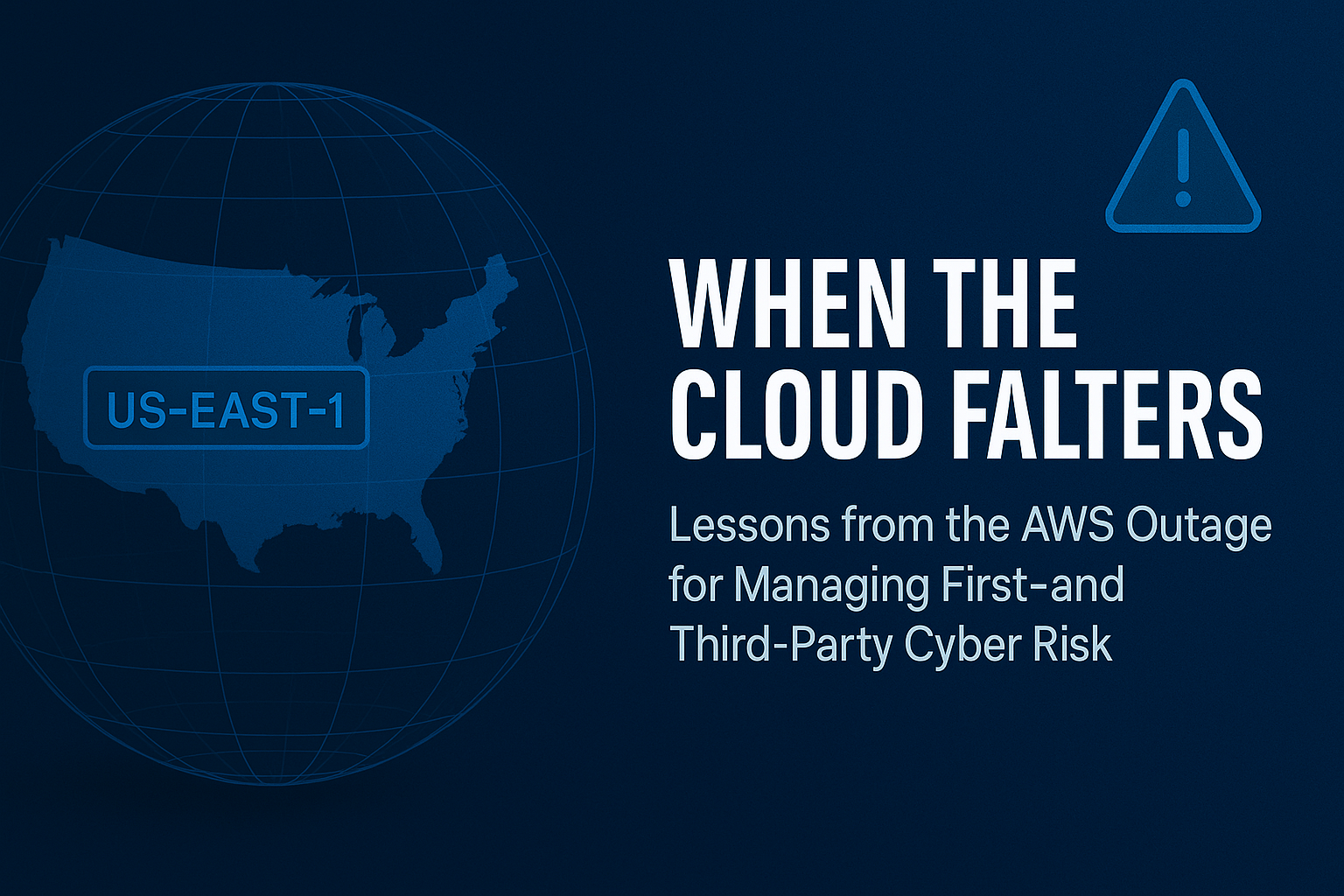Introduction to Third-Party Cyber Risk Management Platforms
Third-party cyber risk management (TPRM) represents the systematic approach organizations use to assess, monitor, and mitigate cybersecurity risks posed by external vendors, suppliers, and service providers. As enterprise ecosystems expand, TPRM has evolved from a compliance checkbox to a critical business function integral to organizational resilience.
This comprehensive guide explores the current TPRM landscape, emerging methodologies, implementation frameworks, and technological solutions that define best practices in 2025.
Key Components of TPRM
Before examining implementation strategies, let's establish a clear taxonomy of TPRM concepts:
- Third-Party Risk Management (TPRM): The comprehensive process of identifying, assessing, and mitigating risks associated with outsourcing to third-party vendors or service providers.
- Vendor Risk Assessment: The systematic evaluation of potential vulnerabilities, threats, and impacts associated with specific third-party relationships.
- Fourth-Party Risk: The potential cybersecurity exposure from vendors' vendors, organizations that are one step removed from direct contractual relationships.
- Continuous Monitoring: The ongoing surveillance of third-party security postures rather than point-in-time assessments.
- Control Validation: The verification process ensures vendor security controls meet established requirements and function as intended.
The Evolution of Third-Party Risk Management
TPRM has undergone a significant transformation since its inception as a procurement-adjacent function:
Initially, third-party risk assessments consisted of rudimentary questionnaires focused on financial stability and basic security certifications. These assessments were typically conducted annually with minimal validation.
Current State of Third-Party Risk Management Platforms
Today's TPRM programs incorporate continuous monitoring, quantitative risk analysis, and integrated governance across multiple risk domains. The shift has been driven by:
- Regulatory Intensification: Frameworks like GDPR, NIST, and SEC cyber disclosure requirements now explicitly address third-party oversight requirements
- Supply Chain Attacks: High-profile incidents (SolarWinds, Kaseya, Log4j) demonstrate how vendor vulnerabilities create enterprise-wide exposure
- Digital Transformation: Cloud migration and API integration are expanding the potential attack surface through third-party connections
- Risk Convergence: The blending of cybersecurity with operational, financial, regulatory, and reputational risk domains
The TPRM Lifecycle: A Systematic Approach
Effective third-party cyber risk management follows a defined lifecycle:
|
Stage |
Purpose |
Key Activities |
|
1. Risk Identification & Categorization |
Build a complete vendor inventory and understand exposure. |
- Inventory all vendors - Tier by data sensitivity, criticality, and impact - Identify regulatory relevance |
|
2. Initial Risk Assessment |
Conduct due diligence based on vendor tier. |
- Framework-aligned questionnaires (ISO 27001, NIST CSF) - Review SOC 2 and pen test reports - Perform vulnerability scans and compliance checks |
|
3. Contract Management |
Embed risk controls into vendor contracts. |
- Define SLAs and security clauses - Include right-to-audit and notification terms - Set liability and data handling terms |
|
4. Continuous Monitoring |
Maintain visibility into vendor security posture. |
- Automated security ratings - Breach and vulnerability alerts - Continuous reassessments and control validation |
|
5. Offboarding & Termination |
Ensure secure and compliant disengagement. |
- Verify data destruction/return - Revoke access - Deintegrate systems and fulfill contract terms |
Discover the third-party risk management lifecycle and its stages in this blog.
Cyber Risk Quantification Methods
The maturation of TPRM has introduced cyber risk quantification techniques for assessing third-party cyber risk:
Financial Impact Modeling
Using frameworks like FAIR (Factor Analysis of Information Risk), organizations can express vendor risk in monetary terms by calculating:
- Loss event frequency
- Primary loss magnitude
- Secondary loss magnitude
- Risk reduction return on investment
Control Effectiveness Scoring
Modern platforms assign weighted values to control implementations based on:
- Framework alignment (e.g., NIST CSF, ISO 27001)
- Implementation evidence
- Testing results
- Compensating controls
Implementation Challenges and Solutions for TPRM
Organizations face several common obstacles when implementing TPRM. Limited staff can hinder comprehensive vendor assessments, a challenge that is addressed by risk-based tiering, which allocates resources proportionally to meet these needs. Vendor resistance to numerous assessment requests can be mitigated through the use of standardized questionnaires and the acceptance of industry certifications. Inconsistent or incomplete vendor information, a data quality issue, can be resolved with centralized vendor data management and validation workflows.
Siloed processes with fragmented risk ownership across departments can be overcome by establishing cross-functional TPRM steering committees and utilizing unified platforms.
The Future of TPRM Platforms: Emerging Trends
Several developments will shape third-party cyber risk management in the coming years:
Supply Chain Transparency
Organizations will demand increased visibility into nth-party relationships (fourth, fifth parties) through:
- Vendor relationship mapping tools
- Supply chain risk intelligence sharing
- Distributed ledger tracking of dependencies
Continuous Validation
Point-in-time assessments will give way to persistent validation through:
- API-based control verification
- Automated evidence collection
- Real-time compliance monitoring
Collaborative Cyber Risk Management
Industry-specific risk sharing will accelerate through:
- Vendor assessment sharing consortiums
- Standard assessment frameworks
- Centralized risk intelligence
Regulatory Considerations
TPRM programs must address evolving regulatory requirements:
Key Regulations Impacting TPRM
- SEC Cybersecurity Rules: Requiring disclosure of material third-party breaches
- EU NIS2 Directive: Extending supply chain security obligations to essential service providers
- DORA (Digital Operational Resilience Act): Establishing ICT third-party risk requirements for financial entities
- CMMC 2.0: Mandating specified security controls for defense contractors and subcontractors
CyberStrong's Approach to TPRM Excellence
The CyberStrong platform delivers comprehensive and automated third-party risk management capabilities through an integrated, intelligence-driven approach. At its core, the platform offers a Unified Control Repository that serves as a single source of truth for vendor controls across multiple frameworks, eliminating the fragmentation that plagues traditional solutions. This foundation is enhanced by control score automation, which provides real-time monitoring of vendor security postures rather than relying on outdated point-in-time assessments.
CyberStrong further distinguishes itself through Financial Risk Quantification capabilities, offering FAIR-compatable modeling of vendor risk impact that translates technical vulnerabilities into dollars and cents.
The CyberStrong methodology follows a progressive maturity model designed to meet organizations where they are and systematically advance their capabilities. This begins with the development of a comprehensive vendor inventory and an initial risk assessment to establish a baseline understanding of the third-party landscape. Once this foundation is established, the process advances to framework mapping and control validation, ensuring alignment with relevant standards and regulations. As the program matures, continuous monitoring implementation becomes possible, transforming periodic assessments into persistent visibility. Advanced implementations incorporate quantitative risk modeling to support data-driven decision making. The final stage encompasses board-level reporting and governance, integrating TPRM into enterprise risk discussions at the highest organizational levels.
Building TPRM Resilience
As digital ecosystems expand, third-party cyber risk management becomes increasingly crucial to an organization's security posture. The most successful programs will implement risk-appropriate assessment methodologies that allocate resources according to vendor criticality and potential impact. These assessments must be supplemented by continuous monitoring capabilities that provide real-time visibility into changing vendor risk profiles. Effective governance demands cross-functional structures that break down traditional silos between IT, procurement, legal, and business units. Underpinning all these capabilities are integrated technology platforms that connect disparate data sources into cohesive intelligence, like CyberStrong.
By leveraging these approaches, organizations can transform first- and third-party relationships from potential vulnerabilities into strategic advantages, ensuring resilience against an evolving threat landscape. The third-party ecosystem, when properly managed, becomes not merely a necessary risk but a competitive differentiator in markets where trust and reliability increasingly drive customer decisions. Reduce third-party risks in your supply chain with a proactive approach that delivers on automation and risk-backed data.
Additional Resources
For organizations looking to enhance their TPRM capabilities, CyberSaint offers:
- Comprehensive TPRM maturity assessments
- Automated Vendor Questionnaires
- Implementation roadmaps
FAQ for Third-Party Risk Management Platforms
Q1: What types of third parties are included in TPRM?
A: TPRM covers a wide array of external entities: IT vendors, cloud service providers, suppliers, distributors, subcontractors, consultants, and even fourth parties (entities your third parties depend on).
Q2: How does TPRM differ from supplier risk management?
A: Supplier risk management focuses primarily on procurement and delivery-related risks. TPRM is broader, covering cybersecurity, regulatory compliance, ESG, and operational risk across all external relationships, not just suppliers.
Q3: What are the key risk domains in TPRM?
A: Common risk domains include cybersecurity, business continuity, privacy, regulatory compliance, bribery/corruption, financial viability, concentration risk, and ESG (Environmental, Social, Governance) factors.
Q4: Can TPRM be automated?
A: Yes. Many modern platforms, like CyberStrong, automate risk assessments, control testing, and continuous monitoring. Automation reduces manual effort, enhances accuracy, and improves scalability across complex vendor ecosystems.
Q5: How does TPRM support regulatory compliance?
A: TPRM programs help fulfill legal and regulatory requirements such as GDPR, CCPA, SEC cyber disclosure rules, and industry-specific mandates by enforcing due diligence, monitoring, and documentation across third-party relationships.
Q86: How can I get started building a TPRM program?
A: Start by identifying all third-party relationships, assigning risk ownership, and selecting a technology platform that supports core Third-Party Risk Management (TPRM) workflows. Building a governance framework and integrating key risk data sources will also accelerate maturity. Using an integrated and holistic approach to TPRM by using CyberStrong and getting a real-time view of your first- and third-party risks.





.png)
.png)
.png)
%201.png)
.png)




